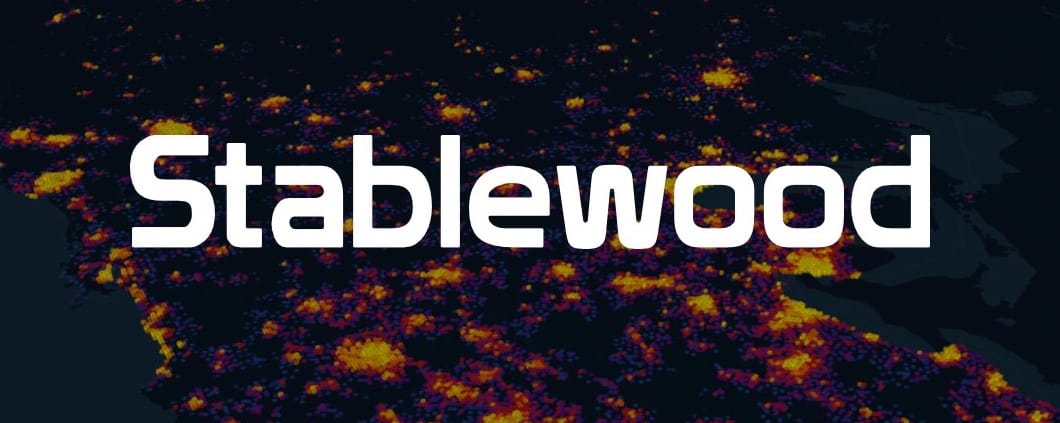Stablewood Properties – A.CRE Real Estate Sponsor Series
In this article, we feature Stablewood Properties as our fourth addition to a new series at A.CRE, our Real Estate Sponsor Series. This series aims to catalog the various real estate investors across the country. For this article, we interviewed Brandon Taubman, the Chief Strategy Officer at Stablewood. Read below to learn all about Stablewood, its history, its investment thesis, and its industry-disruptive technology.
Note from Spencer and Michael: This is another post in our series on Real Estate Sponsors. Through interviewing a variety of individuals involved in real estate investing about their specific firms, this series aims to create a catalog of the various real estate sponsors throughout the country. This post is not investment advice nor does A.CRE endorse/recommend any sponsor in this series. The series is provided for informational purposes only. A huge thank you to Brandon for sharing his knowledge with the A.CRE community!
We’re currently looking for Real Estate Professionals involved in CRE sponsorship to talk about their firm and make more articles like these. If you’re interested, please contact us at [email protected].
About Stablewood Properties
Stablewood is a partnership formed by a group of real estate and data science veterans. The founding members were led by Glenn Lowenstein, former CIO of Hines and a successful real estate investor with over 35 years of experience. In starting Stablewood, Glenn had a vision for a next generation data and tech enabled real estate investment. He brought on a management team that had a concentration of skills in data science and technology, as well as in institutional real estate investing.
The founding members include Gert Stahl, the Chief Technology Officer; Spencer Burton, the Head of Investments; Brandon Taubman, the Chief Strategy Officer; and Alex Lampert, an investments associate. Stablewood started in early 2020 with a vision to scale its capabilities and investments across asset classes. Their first strategy was in single-tenant net lease retail, with follow-on strategies in multi-tenant retail, student housing, land, and developer finance.
From Stablewood’s website:
“Stablewood fuses institutional real estate knowledge with advanced analytics and technological expertise to create the next generation real estate investment firm. By integrating data and technology at every stage of the investment process, Stablewood enhances investment performance and greatly improves efficiency.
Stablewood creates a superior experience for its investors, buyers, and sellers. [Its] integrated approach to real estate investment and management allows Stablewood to do more with less – adapting to structural and cyclical changes in the markets by managing information more effectively.”
Stablewood Properties’ Track Record
Stablewood has a strong track record since its founding. Their first strategy was launched about four to five months into their existence and was a success. They have acquired roughly $300 million to date and have a capital stack of roughly $250 million to continue buying and selling single-tenant net lease real estate.
They established themselves as a preferred buyer in the space, and they continuously reassess what type of real estate might be attractive for investing on a risk-adjusted basis. The company is open to investment opportunities across different product types, recognizing that some may not be appropriate for investment at any given point in time, but they are always looking for new opportunities to grow their technology and capabilities into new verticals.
The Team

Stablewood’s team has individuals from different industries who bring something unique to the table. They have a storied mix of real estate professionals, but also bring a unique perspective from individuals with backgrounds in major league baseball and investment banking.
Stablewood is also a virtual company, so its team members are located all around the United States and even outside of the country. They started as a remote company prior to COVID, so they were ahead of the trend. They found it to be a worthwhile trade-off between the in-office camaraderie and the extra flexibility and efficiency of working from home.
Stablewood Properties’ Investment Thesis
Brandon told us that Stablewood’s investment theses tend to be more contrarian. They often go in a different direction than where the market is heading. They focus on building investment capabilities in areas that are typically considered sub-institutional, where the largest real estate firms do not invest. This is possible given that Stablewood’s technology allows it to achieve scale regardless of an asset’s size.
They are also highly capable within the institutional spaces where data could be better applied to investment decisions. Student housing is a good example of that. Stablewood is able to leverage the vast realm of university and student housing-related data to identify universities that will outperform over the next decade and pick assets where outsized value can be added.
Overall, Stablewood is open to all asset classes, but they prefer strategies where they can build a sustainable competitive advantage through data and technology. To pick an investment, the company measures the health of an area in terms of the sustainability and the growth of economic activity that’s occurring in that area including income, population, and land values. They are keen on following all of those trends nationwide to pick geographies that they want to invest in ahead of the competition.
Sourcing Capital
Stablewood focuses on institutional capital markets, which are harder to access but have more capital available. The company approaches investment managers with hundreds of millions of dollars of dry powder raised and billions in assets under management from pension funds and university endowments.
The executive team has a proven track record of successfully investing and managing billions in institutional capital as an operator and fiduciary. Therefore, the firm can credibly go to institutional capital and raise equity and debt on a programmatic basis.
Investment Strategy and Exit Plan
Stablewood is multi-strategy real estate operator. As of early 2023, the firm executes an STNL retail aggregation buy-sell strategy, with annual volume of $200 million, plus four other strategies poised to launch in the coming 18 months.
The vision in the STNL retail strategy is to buy small credit-backed retail assets at scale where value can be created quickly and then sell those assets as added value is realized. With the single-tenant lease retail program, the average hold period is six months to three years.
In addition to its STNL retail strategy, Stablewood is in the process of launching a multi-tenant retail strategy, an STNL retail developer finance program, a value-add student housing program, a land development strategy, with others in incubation.
Market Trends and Risks
Stablewood’s investments have changed with the current state of the market. For the first time in the past 40 years, there is a much higher willingness for people to move longer distances in search of a lower cost of living and greater affordability. In the past, people would move to a different neighborhood within the same metropolitan area they had lived in for some time, and it was much more rare for someone to move cross-country or across the region. However, there is now a lot of that happening and this is creating an investment opportunity in lower and medium-density suburban areas that historically have not been ideal for investment. Stablewood is working hard to access these markets after the shift in migration patterns.
In the macro space, besides the dislocation issue, the other significant development is inflation and increasing interest rates/capital costs. Consequently, real estate products that can outperform inflation have become relatively more attractive to Stablewood.
When it comes to risk, there are three main ones in the retail space. The first is the renewal probability. The value of these assets declines quickly as lease expiration approaches. This is known as the “melting ice cube” effect. To mitigate this risk, Stablewood focuses on the strength of a brand/national retailer and the performance of the store. The other risks are credit risk and the chance that the tenant will default over the lease term. They must ensure there is a liquid market for the asset held for some period, which is addressed through their powerful deal tracking platform.
How Stablewood is Integrating Technology into Real Estate Investment
Real estate investment is a complex process that requires meticulous research and analysis to identify lucrative opportunities. While the use of technology in real estate has been around for a while, it has been limited in scope and efficiency. However, recent developments have led to the integration of various technological components that have revolutionized the real estate investment landscape and Stablewood is at the forefront of this.
AI-Assisted Underwriting
One of the significant technological components that has transformed real estate investment for Stablewood is AI-assisted underwriting. This technology captures every deal on and off the market within an asset category that the company is investing in. Using basic information, it conducts a preliminary underwriting automatically and attaches essential investment metrics to every deal. These metrics are crucial for investment managers, who then decide whether to spend more time investigating the investment feasibility of a given opportunity. This tool eliminates the need for subjective selection of deals and piecing together relevant investment information.
Data Visualization
Another component of Stablewood’s technology is its GIS or Atlas tool. This tool is a way of visualizing data. It’s a geospatial integration tool, which unifies all the disparate real estate data in a seamless way. This technology allows the company to draw conclusions about the strength of real estate quickly. The company’s tool compares locations and investment indicators nationwide across thousands of different investment indicators.
Information System
Their third major technological component is Stablewood’s information system. It is a self-contained, proprietary, single source of truth system that passes all the relevant investment and management information along with an asset throughout the investment life cycle. The company aims to make all the information tied to every deal as reliable and accurate as possible while also minimizing the time spent by people and third-party service providers on redundant work. This system ensures that all the relevant information is in a single place and can reveal the truth of a deal at any point in time.
Conclusion
Real estate investment has been slow to incorporate data and technology. However, recent developments have led to the integration of technology components that have revolutionized the real estate investment landscape. Stablewood believes that real estate investors and audience members will see a lot of change in the industry moving forward. This transformation will be evident in how investments are identified and how the industry will be shaped by technological advancements.
Frequently Asked Questions about Stablewood Properties
What is Stablewood Properties and who founded it?
Stablewood is a next-generation, data-driven real estate investment firm founded in early 2020 by Glenn Lowenstein, former CIO of Hines, along with a team of experts in real estate and data science including Gert Stahl, Spencer Burton, Brandon Taubman, and Alex Lampert.
What makes Stablewood’s investment approach unique?
Stablewood integrates advanced data analytics and proprietary technology at every stage of the investment process. Their approach enables them to invest efficiently in both institutional and sub-institutional spaces where other firms may not scale.
What asset classes does Stablewood focus on?
Stablewood is open to all asset classes but initially focused on single-tenant net lease (STNL) retail. Other strategies in development include multi-tenant retail, student housing, land development, and developer finance programs.
How much real estate has Stablewood acquired so far?
As of early 2023, Stablewood has acquired approximately $300 million in real estate and has $250 million in available capital to continue investing, primarily in STNL retail.
What is Stablewood’s typical hold period for investments?
For its STNL retail strategy, Stablewood typically holds assets for six months to three years before selling, depending on when value is realized.
What role does technology play in Stablewood’s strategy?
Technology is central to Stablewood’s strategy. Their AI-assisted underwriting, data visualization (Atlas tool), and proprietary information system streamline deal sourcing, evaluation, and management, improving accuracy and efficiency.
What are the key risks in Stablewood’s retail investment strategy?
The main risks include lease renewal risk (“melting ice cube” effect), credit risk of tenants, and liquidity risk. Stablewood mitigates these with data on tenant performance and market liquidity through its technology platform.
How does Stablewood select investment locations?
They analyze the sustainability and growth of economic activity using indicators like income, population, and land values. They aim to identify undervalued geographies ahead of market trends, especially in suburban areas with growing demand.
Who are Stablewood’s capital partners?
Stablewood targets institutional capital sources, including investment managers with hundreds of millions in dry powder and billions in AUM from pensions and endowments. Their executive team has a proven track record with institutional investors.
What type of company culture does Stablewood have?
Stablewood is a fully remote, virtual company, operating that way even before COVID. This gives them flexibility and efficiency. Their team includes professionals with backgrounds in real estate, tech, investment banking, and even professional sports.









